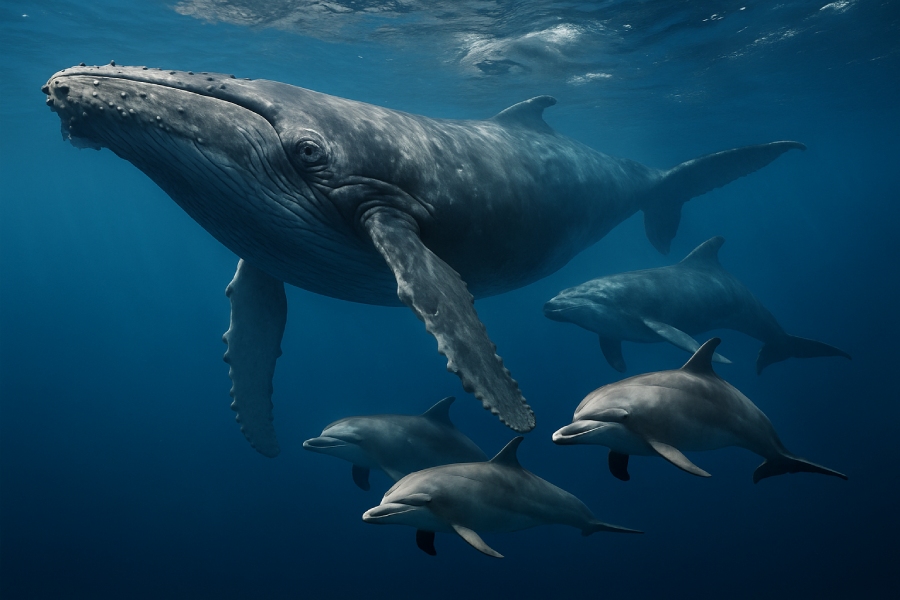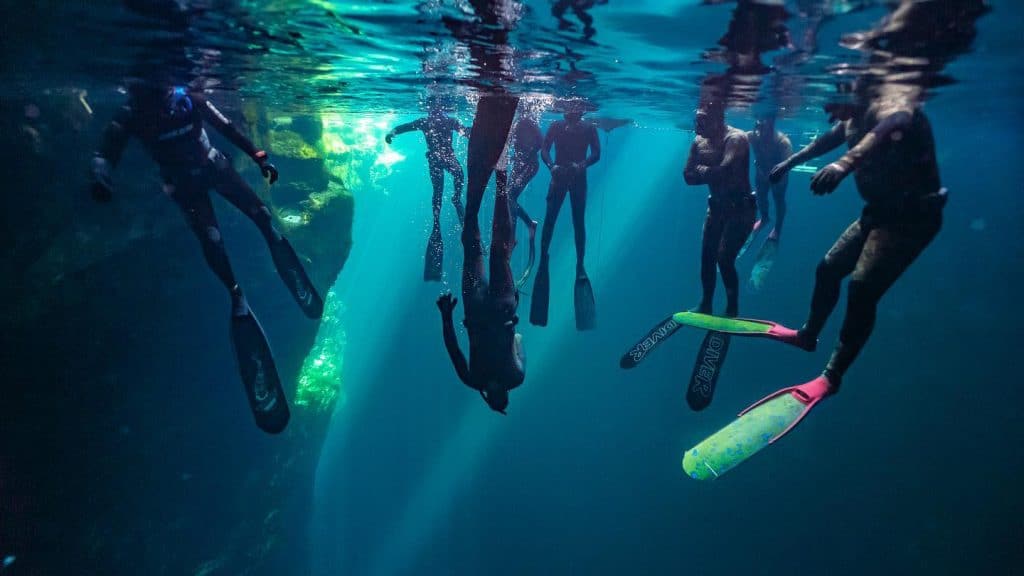
Unlock Better Breath Holding in Freediving with Marine Mammal Techniques
Breath holding techniques for freedivers are more than just training tools—they’re gateways to exploring the body’s natural limits and mastering calm, controlled movement beneath the surface. While humans practice to extend their breath-hold, marine mammals like whales and dolphins do it instinctively and with incredible efficiency. By studying how these creatures dive with grace and endurance, freedivers can learn to enhance their performance, increase stamina, and dive more safely.
This article explores how freedivers can learn from the physiology and behaviors of whales and dolphins to boost their breath-hold capacity and underwater control.
What Marine Mammals Teach Us About Breath Holding
Whales and dolphins have evolved over millions of years to master life underwater. Their bodies are built to conserve oxygen, resist pressure, and manage long periods without breathing. While humans don’t have the same natural capabilities, we can train our bodies and minds to replicate some of these traits. All exercises are to be practiced dry unless you have completed a freediving course and have certified buddy to train with in the water.
Key differences between marine mammals and humans include:
- Lung capacity: Whales and dolphins have proportionally larger lungs than humans, allowing for greater oxygen storage.
- Oxygen efficiency: Their muscles store more oxygen thanks to high levels of myoglobin, supporting long dives.
- Heart rate control: Marine mammals can dramatically slow their heart rate (a process called bradycardia) to conserve oxygen during deep dives. While humans also experience a form of bradycardia during breath-holding (the mammalian dive reflex), it is less pronounced.
- Blood flow regulation: Blood is redirected to vital organs like the brain and heart, especially when oxygen levels drop.
Though these traits are biological, freedivers can train to mimic many of these responses through breathwork, relaxation, and gradual exposure to diving conditions.
“The best way to observe a fish is to become a fish.” – Jacques Yves Cousteau, French naval officer and oceanographer
Techniques for Better Breath Holding—Inspired by Nature
Controlled Breathing
Before a dive, whales and dolphins instinctively take slow, deep breaths to fully oxygenate their bodies. Freedivers use a similar approach by practicingdiaphragmatic breathingand avoiding rapid or shallow breaths. A well-structured breath-up routine helps calm the nervous system, lowers heart rate, and optimizes oxygen use.
Practical techniques include:
- Deep abdominal (diaphragmatic) breathing
- Slow, controlled exhalations to help reduce heart rate
- Avoiding hyperventilation, which can increase the risk of shallow water blackout
“Freediving is a journey of self-discovery, where you learn to face your fears and conquer your limits.” – William Tubridge, world champion freediver.
Relaxation and Mindfulness
Calmness is key in freediving. Marine mammals move effortlessly underwater, conserving energy by staying relaxed. The mental aspects of freediving are as challenging as the physical. Freedivers can use techniques like progressive muscle relaxation and mental visualization to stay focused and reduce anxiety before and during a dive.
This not only extends breath-hold time but also deepens the connection between body and environment.
Gradual Depth Progression
Rather than forcing rapid adaptations, whales and dolphins are naturally conditioned to pressure changes. Freedivers can learn from this by increasing depth gradually in training. This allows the body to adapt to pressure, improve equalization, and reduce discomfort during descent.
Extended Apnea Practice
To build endurance underwater, it’s essential to practice holding the breath in a safe, controlled setting. Training in static apnea (holding breath without movement) helps the body become more comfortable with rising carbon dioxide and reduced oxygen levels.
With consistent practice, freedivers often notice:
- Increased breath-hold times
- Reduced anxiety under stress
- Better control over physical responses like diaphragm contractions
The Mammalian Diving Reflex: A Shared Tool
One of the most powerful tools freedivers share with marine mammals is the mammalian diving reflex. This involuntary response is triggered when the face is submerged in cool water and helps optimize the body’s oxygen use.
Key elements of the diving reflex include:
- Bradycardia: Slowing of the heart rate to reduce oxygen consumption
- Peripheral vasoconstriction: Blood vessels narrow in the limbs to preserve core oxygen
- Blood shift: Blood moves to protect the lungs and vital organs from pressure
- Splenic contraction: The spleen releases oxygen-rich red blood cells for added support
Freedivers can trigger and strengthen this reflex through training, such as:
- Facial immersion in cold water
- Calm bre ath-ups before diving
- Practicing diving in cooler environments
Environmental Adaptation and Training Variety
Marine mammals dive in all kinds of environments—from turbulent surf to calm open seas. Freedivers can also benefit from training in varied conditions to improve adaptability and comfort.
Practicing in pools, oceans, and freshwater locations helps develop flexibility in breathing and posture. Adapting to current, temperature, and visibility builds confidence and reduces stress during dives.
Designing a Marine-Inspired Training Plan
A well-rounded training routine that incorporates marine techniques should balance breathwork, physical conditioning, and mental clarity. Here’s a suggested framework:
Weekly Focus Areas:
- Breathwork sessions (including CO₂ tolerance tables)
- Static apnea practice in a safe environment
- Depth training with gradual progression
- Mindfulness through yoga or meditation
- Cardiovascular conditioning to improve overall stamina
Tracking progress is just as important. Freedivers can use logbooks or apps to monitor:
- Static breath-hold times
- Max depths
- Subjective comfort levels
- Heart rate recovery after dives
This data helps tailor training to each individual’s strengths and areas for improvement.
Nature has always been our greatest teacher—and in freediving, whales and dolphins show us what’s possible when breath, body, and environment are perfectly in sync. At The Pressure Project, we draw inspiration from these incredible marine mammals, helping you build underwater breath holding techniques through breathwork, reflex training, and mindful movement. The result? Safer dives, greater endurance, and a deeper connection to the ocean. Join a course with The Pressure Project and discover how far your breath can take you.
FAQs
Breath holding in freediving refers to the practice of holding your breath while diving underwater without the use of breathing equipment. It’s a fundamental skill in freediving that allows divers to explore greater depths and stay underwater longer. Mastering breath control improves oxygen efficiency, reduces stress, and enhances safety while diving.
Whales and dolphins hold their breath for extended periods thanks to specialized adaptations. They have larger lungs relative to body size, high myoglobin concentrations in muscles for oxygen storage, and the ability to slow their heart rate through a natural response called the mammalian diving reflex. These features help them conserve oxygen and function efficiently at great depths.
While humans can’t match the full physiological abilities of whales and dolphins, we can train to mimic certain aspects. With consistent practice in diaphragmatic breathing, CO₂ tolerance exercises, and mindfulness techniques, freedivers can significantly improve their breath-holding capacity. Training also activates natural reflexes that help the body adapt to being underwater.
The mammalian diving reflex is an automatic response that occurs when a human’s face is submerged in cold water. It slows the heart rate, constricts blood vessels in the limbs, and redirects blood flow to essential organs like the brain and heart. For freedivers, activating this reflex can help conserve oxygen, extend dive times, and improve safety during deep dives.
To improve breath holding in freediving, begin with consistent breathwork sessions such as deep abdominal breathing and CO₂/O₂ table training. Practice static apnea in a safe environment, gradually increase your depth in water sessions, and include mindfulness practices like yoga or meditation to stay calm. Tracking progress with a dive log or app is also essential for monitoring improvements over time.
Relaxation is crucial for successful breath holding in freediving. Staying calm reduces the body’s oxygen consumption and delays the urge to breathe. Mental relaxation techniques, such as visualisation and controlled exhalation, help lower heart rate and anxiety, making it easier to stay underwater longer and respond safely to pressure changes.
Yes, training for breath holding does carry risks if not done properly. Hyperventilation, lack of supervision, and pushing limits too far can lead to shallow water blackout or hypoxia. Always train with a buddy, follow safety protocols, and listen to your body’s signals. Prioritizing safety ensures long-term progress and enjoyment in freediving.
Mimicking marine mammals improves freediving performance by encouraging efficient breathing patterns, better response to pressure changes, and improved oxygen use. By adopting techniques inspired by whales and dolphins—like slow, deep breaths, calm movement, and environmental adaptation—freedivers can boost both their physical capability and mental clarity underwater.
Contact us now at The Pressure Project and we’ll help you master breath holding in freediving with nature-inspired methods that really work.



